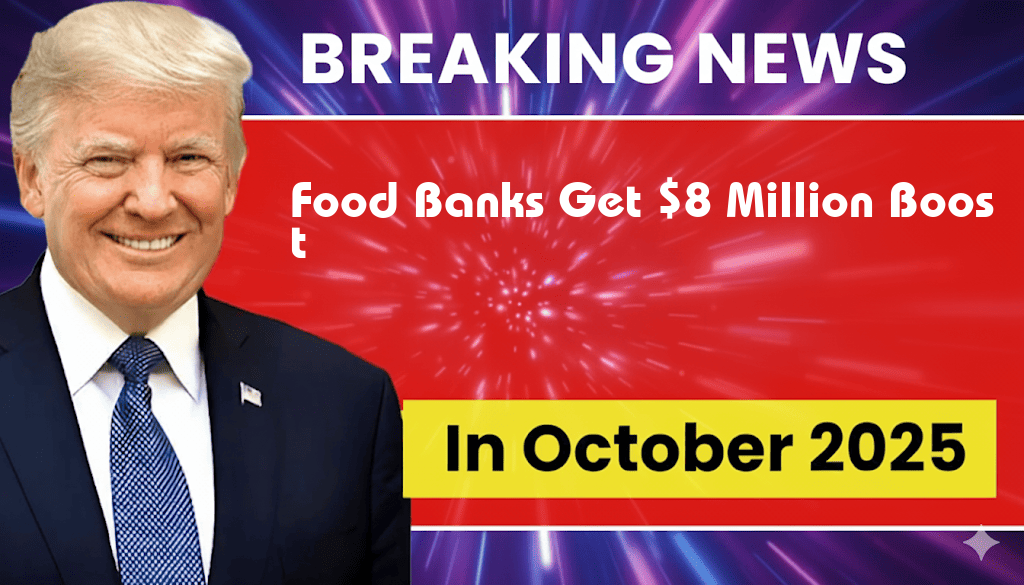In a significant move to combat food insecurity, food banks across the United States are set to receive an additional $8 million in funding as the nation braces for potential cuts to the Supplemental Nutrition Assistance Program (SNAP). This financial boost, announced by various nonprofit organizations and state agencies, aims to mitigate the anticipated impact of reduced federal assistance on millions of Americans who rely on these programs for their daily sustenance. With the potential SNAP cuts looming, experts warn that the need for food bank resources will rise sharply, necessitating increased support to ensure vulnerable populations can access essential nutrition.
Funding Details and Distribution
The $8 million allocation is part of a broader initiative designed to strengthen local food banks and enhance their capacity to serve communities in need. The funds will be distributed through established networks, targeting regions most affected by food scarcity.
Key Areas of Focus
- Emergency Food Assistance: Providing immediate relief to families facing food shortages.
- Long-term Solutions: Developing programs aimed at reducing hunger sustainably.
- Community Outreach: Increasing awareness and accessibility of food bank services.
Implications of SNAP Cuts
As Congress debates the future of SNAP, which serves approximately 41 million Americans, the potential cuts could leave many families struggling to afford basic necessities. Experts predict that these changes could exacerbate food insecurity, leading to increased demand at food banks nationwide.
Understanding SNAP
SNAP, formerly known as food stamps, is a critical federal program designed to assist low-income individuals and families in purchasing food. Changes to this program can have far-reaching effects on public health and economic stability.
| Year | Projected Food Insecurity Rate |
|---|---|
| 2021 | 10.5% |
| 2023 (Projected) | 12.7% |
Community Response and Support
Food banks are rallying to prepare for the impending challenges. Local organizations are coordinating efforts to maximize the impact of the new funding, focusing on expanding their reach and improving service delivery. Initiatives include:
- Partnerships with Local Farmers: Establishing relationships to secure fresh produce and reduce waste.
- Volunteer Recruitment Drives: Engaging community members to help distribute food and raise awareness.
- Enhanced Technology Systems: Implementing better tracking and management systems to streamline operations.
Looking Ahead
The additional funding comes at a crucial time as food banks prepare to meet rising demands. With the support of both governmental and private entities, these organizations aim to mitigate the effects of SNAP cuts and ensure that no one goes hungry. Community leaders emphasize that the collaboration between food banks, government agencies, and private donors will be vital in navigating the challenges ahead.
For more detailed information on SNAP and its implications, visit USDA SNAP or learn about food insecurity trends at Feeding America.
Conclusion
The infusion of $8 million into food banks represents a proactive approach to addressing the looming crisis of food insecurity exacerbated by potential SNAP cuts. As organizations mobilize to enhance their capacity, the focus remains on supporting vulnerable populations across the country.
Frequently Asked Questions
What is the significance of the $8 million boost to food banks?
The $8 million boost to food banks is crucial as it helps to address the increasing demand for food assistance amid anticipated SNAP cuts. This funding will enable food banks to better support communities facing food insecurity.
How might the anticipated SNAP cuts impact families?
The anticipated SNAP cuts could reduce the financial assistance that families rely on for purchasing food, leading to higher levels of food insecurity and potentially overwhelming local food banks.
Who is providing the funding boost to food banks?
The $8 million funding boost is being provided by various organizations and government entities that recognize the pressing need for food assistance as SNAP benefits are expected to decrease.
What can individuals do to help food banks during this time?
Individuals can help food banks by donating food, volunteering their time, or contributing financially. Every little bit helps food banks manage the heightened demand caused by SNAP cuts.
Are there any specific programs associated with the funding boost?
Yes, the funding boost is likely to support various programs at food banks, including meal distribution, nutrition education, and outreach efforts aimed at assisting families affected by SNAP cuts.

Leave a Reply